-
Use Cases
-
Resources
-
Pricing
Ecology Timeline
(Ancient civilizations to Present)Ecology is the study of how living organisms interact with each other and their environment. It encompasses the relationships between organisms, the environment they live in, and the processes that influence these interactions. This timeline highlights key events and discoveries in the field of ecology. More Less
Environmental Movements
Silent Spring publication
Sep 27, 1962
% complete
Rachel Carson's groundbreaking book, "Silent Spring," highlighted the detrimental effects of pesticides, particularly DDT, on the environment and raised public awareness about the importance of ecological balance and the need for environmental protection.
Image source: Silent Spring
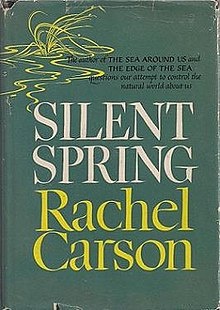
Creation of Earth Day
Apr 22, 1970
% complete
Earth Day was established as an annual event to raise awareness and promote environmental protection. It has since become a global movement, mobilizing millions of people worldwide to take action for a sustainable and healthy planet.
Image source: Earth Day

Formation of Greenpeace
Sep 15, 1971
% complete
Greenpeace, an international environmental organization, was founded to promote non-violent direct action to protect the environment. It has played a significant role in advocating for issues such as climate change, deforestation, and marine conservation.
Image source: Greenpeace

Rachel Carson posthumously awarded Presidential Medal of Freedom
Jun 9, 1980
% complete
Rachel Carson, author of "Silent Spring," was posthumously awarded the Presidential Medal of Freedom for her contributions to environmental conservation and raising awareness about the impact of human activities on the natural world.
Image source: Rachel Carson

United Nations Framework Convention on Climate Change
May 9, 1992
% complete
The United Nations Framework Convention on Climate Change (UNFCCC) was adopted to address climate change and its impacts. It serves as the foundation for international cooperation on climate action and the negotiation of subsequent agreements.
Image source: United Nations Framework Convention on Climate Change

Rio Earth Summit
Jun 3, 1992 - Jun 14, 1992
% complete
The Rio Earth Summit brought together world leaders to discuss environmental issues and sustainable development. It resulted in the adoption of the United Nations Framework Convention on Climate Change and the Convention on Biological Diversity.
Image source: Earth Summit

Rio Declaration on Environment and Development
Jun 14, 1992
% complete
The Rio Declaration outlined principles for sustainable development, emphasizing the need to balance economic growth, social development, and environmental protection.
Rio+20 Conference
Jun 20, 2012 - Jun 22, 2012
% complete
The Rio+20 Conference aimed to assess progress and discuss new initiatives for sustainable development. It focused on issues such as poverty eradication, green economy, and the institutional framework for sustainable development.
Image source: United Nations Conference on Sustainable Development
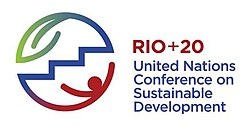
Conservation Efforts
DDT banned in the United States
Dec 31, 1972
% complete
The United States banned the use of the pesticide DDT due to its harmful effects on the environment, wildlife, and human health. This marked a significant step in pesticide regulation and environmental protection.
Image source: DDT
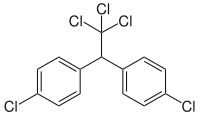
Endangered Species Act
Dec 28, 1973
% complete
The Endangered Species Act was enacted in the United States to protect and conserve endangered and threatened species and their habitats. It has been instrumental in preventing the extinction of numerous plant and animal species.
Image source: Endangered Species Act of 1973
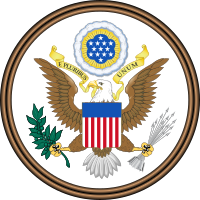
CITES Convention
Jul 1, 1975
% complete
The Convention on International Trade in Endangered Species of Wild Fauna and Flora (CITES) was established to regulate and monitor international trade in endangered species. It aims to ensure that trade does not threaten the survival of species.
Image source: CITES

Great Barrier Reef listed as a World Heritage site
Oct 26, 1981
% complete
The Great Barrier Reef, one of the world's most diverse ecosystems, was listed as a World Heritage site by UNESCO. This recognition highlights its ecological importance and the need for its protection.
Image source: Great Barrier Reef
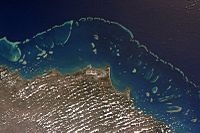
Montreal Protocol on Substances that Deplete the Ozone Layer
Sep 16, 1987
% complete
The Montreal Protocol aimed to protect the ozone layer by phasing out the production and use of substances, such as chlorofluorocarbons (CFCs), that deplete the ozone. It has been successful in reducing the ozone hole and is considered a significant environmental achievement.
Image source: Montreal Protocol

Kyoto Protocol
Feb 16, 2005
% complete
The Kyoto Protocol is an international agreement aimed at reducing greenhouse gas emissions to combat climate change. It established binding targets for developed countries to reduce their emissions and encouraged the use of renewable energy sources.
Kyoto Protocol comes into force
Feb 16, 2005
% complete
The Kyoto Protocol officially came into force, requiring participating countries to meet their emission reduction targets. It represented a significant international effort to address climate change and promote sustainable development.
Image source: Kyoto Protocol
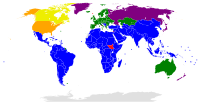
Paris Agreement
Nov 4, 2016
% complete
The Paris Agreement is a global effort to combat climate change by limiting global warming to well below 2 degrees Celsius. It sets targets for reducing greenhouse gas emissions, adapting to the impacts of climate change, and providing financial support to developing countries.
Image source: Paris Agreement
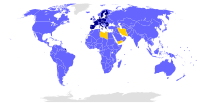
Environmental Disasters
Love Canal Toxic Waste Controversy
Aug 2, 1978
% complete
The Love Canal toxic waste controversy in New York brought attention to the hazardous effects of buried chemical waste on human health and the environment. It led to increased regulations and awareness regarding toxic waste disposal.
Image source: Love Canal
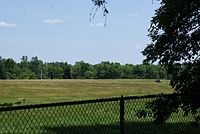
Three Mile Island Nuclear Accident
Mar 28, 1979
% complete
The Three Mile Island nuclear accident in Pennsylvania, USA, resulted in a partial meltdown of a nuclear reactor. While there were no immediate fatalities, the incident raised concerns about the safety of nuclear power and its potential environmental impacts.
Image source: Three Mile Island accident

Chernobyl Disaster
Apr 26, 1986
% complete
The Chernobyl nuclear disaster in Ukraine was one of the worst nuclear accidents in history. The explosion and subsequent release of radioactive materials had devastating ecological consequences, leading to long-term environmental contamination and health effects.
Image source: Chernobyl disaster

Exxon Valdez Oil Spill
Mar 24, 1989
% complete
The Exxon Valdez oil spill in Alaska resulted in the release of millions of gallons of crude oil into Prince William Sound. It had devastating effects on the local ecosystem, including marine life, birds, and coastal habitats.
Image source: Exxon Valdez oil spill
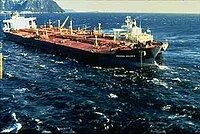
Deepwater Horizon Oil Spill
Apr 20, 2010 - Jul 15, 2010
% complete
The Deepwater Horizon oil spill in the Gulf of Mexico was one of the largest marine oil spills in history. The explosion and subsequent release of millions of barrels of oil had severe ecological impacts on marine life, coastal ecosystems, and the fishing industry.
Image source: Deepwater Horizon oil spill
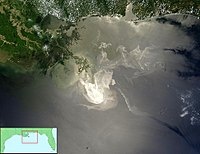
Scientific Discoveries
Discovery of the Ozone Hole
May 16, 1985
% complete
Scientists discovered the Antarctic ozone hole, a significant thinning of the ozone layer, highlighting the detrimental effects of ozone-depleting substances. This discovery led to increased research and international action to protect the ozone layer.
Discovery of the Antarctic Ozone Hole
May 16, 1985
% complete
Scientists discovered the ozone hole over Antarctica, leading to increased research and international agreements to protect the ozone layer and phase out ozone-depleting substances.
Image source: Ozone depletion
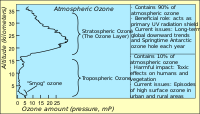
Intergovernmental Panel on Climate Change (IPCC) Established
Nov 1988
% complete
The IPCC was established to provide policymakers with scientific assessments on climate change, its impacts, and potential mitigation strategies. Its reports have played a crucial role in shaping global climate policies.
Image source: Intergovernmental Panel on Climate Change
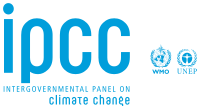
Key Facts
- The Greek philosopher Aristotle is often considered the father of ecology, as he was the first to study and describe the natural world.
- The development of the theory of evolution by Charles Darwin in the 19th century had a profound impact on the field of ecology, as it provided a framework for understanding the diversity and interconnectedness of life.
- The establishment of national parks and nature reserves in the late 19th and early 20th centuries marked a shift towards conservation and the protection of natural habitats.
- Rachel Carson's book 'Silent Spring' published in 1962 is considered a landmark work that brought attention to the negative effects of pesticides on the environment and sparked the modern environmental movement.
- The concept of sustainable development, which integrates economic growth with environmental protection, gained prominence in the late 20th century and continues to be a central focus of ecological research.
Source
This Ecology timeline was generated with the help of AI using information found on the internet.
We strive to make these timelines as accurate as possible, but occasionally inaccurates slip in. If you notice anything amiss, let us know at [email protected] and we'll correct it for future visitors.
Create a timeline like this one for free
Preceden lets you create stunning timelines using AI or manually.
Customize your timeline with one of our low-cost paid plans
Export your timeline, add your own events, edit or remove AI-generated events, and much more
Free
$
0
free forever
No credit card required.
Basic
$
10
/month
billed annually
Cancel anytime.
Pro
$
16
/month
billed annually
Cancel anytime.
Common Questions
Can I cancel anytime?
Yes. You can cancel your subscription from your account page at anytime which will ensure you are not charged again. If you cancel you can still access your subscription for the full time period you paid for.
Will you send an annual renewal reminder?
Yes, we will email you a reminder prior to the annual renewal and will also email you a receipt.
Do you offer refunds?
Yes. You can email us within 15 days of any payment and we will issue you a full refund.
What if I have more questions?
Check out our pricing docs or send us an email anytime: [email protected].